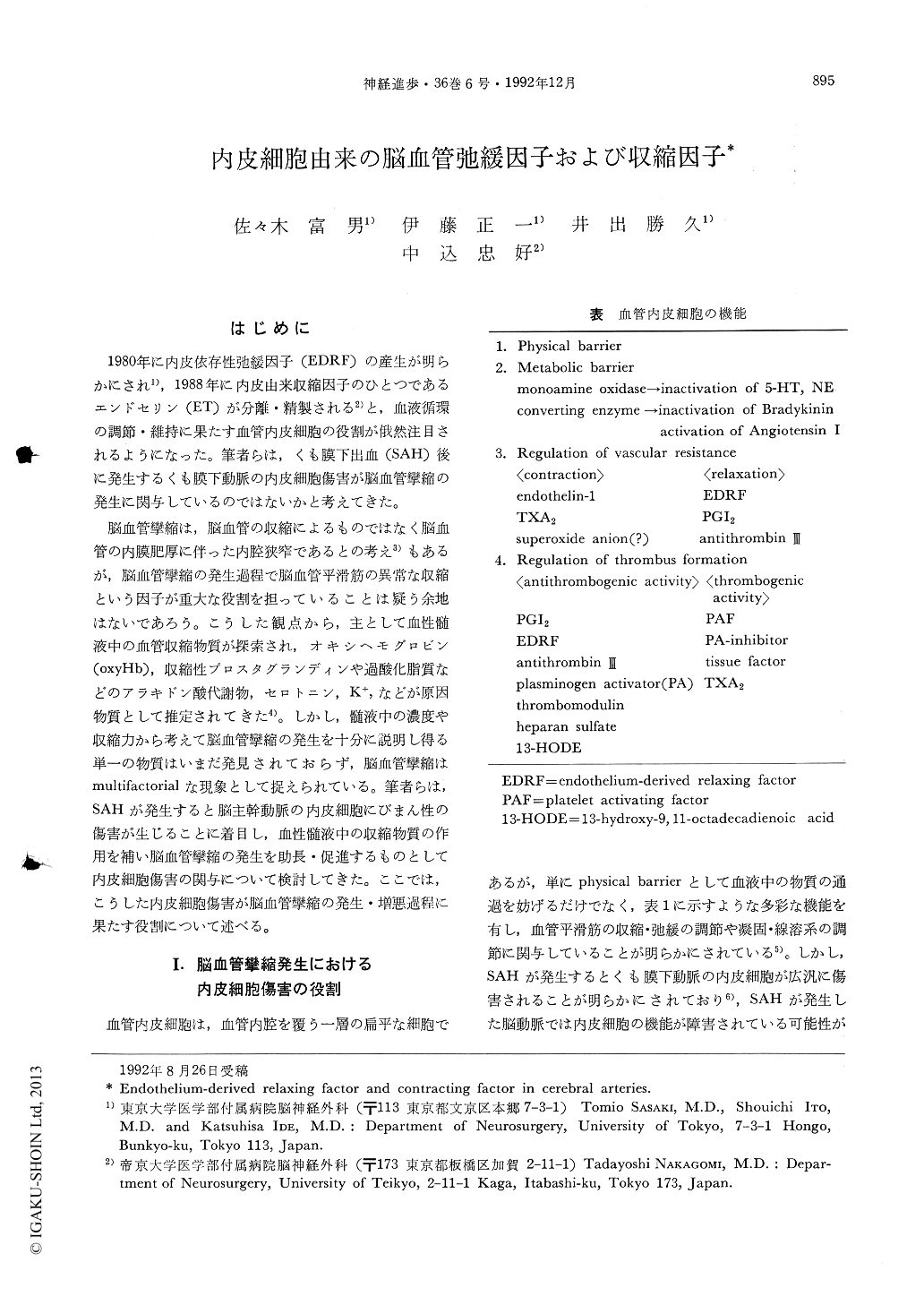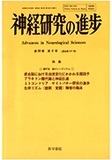Japanese
English
- 有料閲覧
- Abstract 文献概要
- 1ページ目 Look Inside
はじめに
1980年に内皮依存性弛緩因子(EDRF)の産生が明らかにされ1),1988年に内皮由来収縮因子のひとつであるエンドセリン(ET)が分離・精製される2)と,血液循環の調節・維持に果たす血管内皮細胞の役割が俄然注目されるようになった。筆者らは,くも膜下出血(SAH)後に発生するくも膜下動脈の内皮細胞傷害が脳血管攣縮の発生に関与しているのではないかと考えてきた。
脳血管攣縮は,脳血管の収縮によるものではなく脳血管の内膜肥厚に伴った内腔狭窄であるとの考え3)もあるが,脳血管攣縮の発生過程で脳血管平滑筋の異常な収縮という因子が重大な役割を担っていることは疑う余地はないであろう。こうした観点から,主として血性髄液中の血管収縮物質が探索され,オキシヘモグロビン(oxyHb),収縮性プロスタグランディンや過酸化脂質などのアラキドン酸代謝物,セロトニン,K+,などが原因物質として推定されてきた4)。しかし,髄液中の濃度や収縮力から考えて脳血管攣縮の発生を十分に説明し得る単一の物質はいまだ発見されておらず,脳血管攣縮はmultifactorialな現象として捉えられている。筆者らは,SAHが発生すると脳主幹動脈の内皮細胞にびまん性の傷害が生じることに着目し,血性髄液中の収縮物質の作用を補い脳血管攣縮の発生を助長・促進するものとして内皮細胞傷害の関与について検討してきた。ここでは,こうした内皮細胞傷害が脳血管攣縮の発生・増悪過程に果たす役割について述べる。
Vascular endothelial cells possess important functional and metabolic activities to inhibit the ab-normal contraction of vascular smooth muscle cells or to prevent thromboembolism. Over the last 10 years, we have directed our attention to the role of endothelial injury to the major cerebral arteries in the pathogenesis of vasospasm following subarachnoid hemorrhage (SAH) as an alternative or sup-plementary hypothesis to the role of vasoactive substances from the subarachnoid clot. Our exper-imental studies demonstrated the following findings; (1) SAH produces a biphasic breakdown of the blood-arterial wall barrier of the major cerebral arteries in the region of the basal subarachnoid cisterns, (2) SAH induces a progressive diminution of PGI2 synthesis in the cerebral arteries, (3) Endothelium-dependent vasodilation evoked by either Ach or ATP was impaired in the major cerebral arteries ex-posed to SAH, (4) Intracisternal injection of 0.6~1.2×10-12M/kg of endothelin-1(ET-1) caused biphasic contraction of the basilar artery lasting for more than 24 hours, (5) Intracisternal infusion of an ETA receptor antagonist significantly attenuated the degree of angiographic vasospasm on Day 7 of SAH.

Copyright © 1992, Igaku-Shoin Ltd. All rights reserved.


